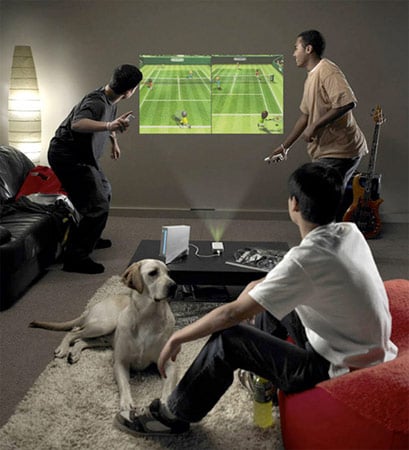Mitsubishi's Red Laser Diode Advacement Could Lead To Brighter Pico Projectors
The first wave of pico projectors had all sorts of steam behind it, but
that enthusiasm was soon pushed away as newer and more wide-ranging
products came to market. After a year-long lull, it really feels like
the mini projector has its groove back, and now we're hearing more and
more about new options and new progress being made in order to make
them more suitable for the mainstream market.
Mitsubishi Electric has today announced something that's highly technical in nature, but could have a significant impact on the future production of these devices. The company's new 638-nanometer (nm) wavelength red laser diode (ML520G72) offers the world’s highest output power in 638 nm band LDs, making it ideal for pico projectors and other portable display systems that require a red light source with high brightness. In case you're unfamiliar, red is a pretty important part of the projection equation, and much like the improvements on blue in the OLED world, this here could really shake things up going forward.

In comparison with LEDs, laser diodes deliver higher output power with less power consumption, enabling batteries to last longer; in July of last year, the company launched a 638nm LD that offers 300 milliwatts (mW) output power, high brightness and pure red tone. The new version, however, offers an even higher output power of 500 mW, currently the world’s highest in 638 nm band, which helps achieve high-luminous projectors of up to 60 lumen. That's the kicker. Currently, the nicest pico projector out hits a peak at 50 lumens, which essentially tells you how bright the image can be projected in a well lit room. The higher the lumens, the less dark your cave has to be in order to get a solid image on the wall or projection screen. One of the main complaints with these devices is that they don't shine bright in rooms with ambient light, but this innovation could definitely help change that. In addition, the new LD has an industry-leading electrical conversion ratio of 32% at 500 mW, and at a case temperature of 25 degrees C, which help to reduce power consumption in pico projectors.
Samples are expected to start shipping next month, though there's no telling when this will begin to affect shipping pico projectors. We're guessing it won't be long before the little guys are as bright as the big guys, though.
Mitsubishi Electric has today announced something that's highly technical in nature, but could have a significant impact on the future production of these devices. The company's new 638-nanometer (nm) wavelength red laser diode (ML520G72) offers the world’s highest output power in 638 nm band LDs, making it ideal for pico projectors and other portable display systems that require a red light source with high brightness. In case you're unfamiliar, red is a pretty important part of the projection equation, and much like the improvements on blue in the OLED world, this here could really shake things up going forward.

In comparison with LEDs, laser diodes deliver higher output power with less power consumption, enabling batteries to last longer; in July of last year, the company launched a 638nm LD that offers 300 milliwatts (mW) output power, high brightness and pure red tone. The new version, however, offers an even higher output power of 500 mW, currently the world’s highest in 638 nm band, which helps achieve high-luminous projectors of up to 60 lumen. That's the kicker. Currently, the nicest pico projector out hits a peak at 50 lumens, which essentially tells you how bright the image can be projected in a well lit room. The higher the lumens, the less dark your cave has to be in order to get a solid image on the wall or projection screen. One of the main complaints with these devices is that they don't shine bright in rooms with ambient light, but this innovation could definitely help change that. In addition, the new LD has an industry-leading electrical conversion ratio of 32% at 500 mW, and at a case temperature of 25 degrees C, which help to reduce power consumption in pico projectors.
Samples are expected to start shipping next month, though there's no telling when this will begin to affect shipping pico projectors. We're guessing it won't be long before the little guys are as bright as the big guys, though.

